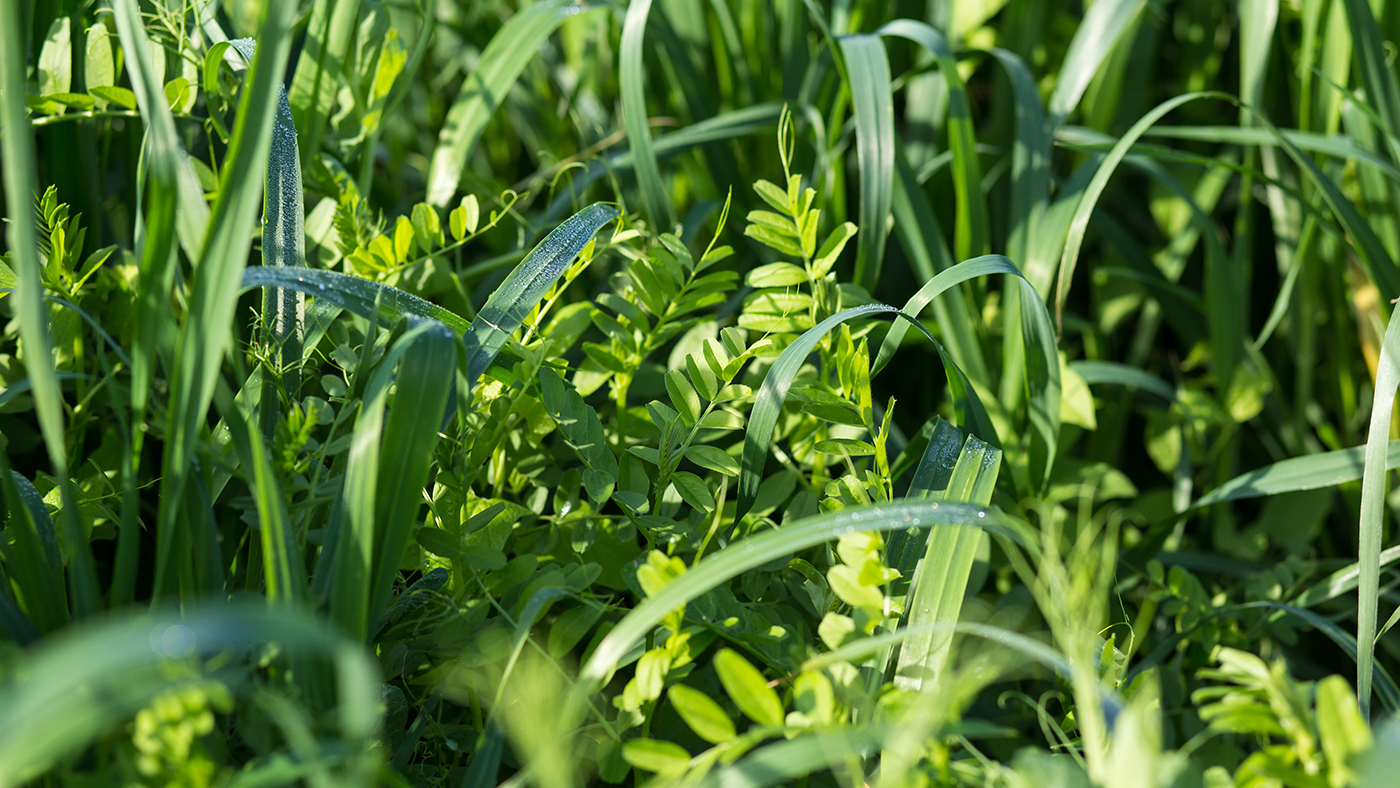This fall as farmers finish up harvesting their main cash crops such as corn and soybeans, some of those farmers will be bringing out right away the planters again to put in cover crops on that land rather than leaving the land exposed to erosion from wind and rain. It does cost money to plant cover crops, but many farmers say it’s worth it especially if they can get some cash payments or crop insurance discounts from the government to help with the costs.
From almost no farmers using cover crops 40 years ago, today, surveys show about 40% of farmers use cover crops on at least part of their land. Conservation experts at the USDA have been encouraging producers to try cover crops for years, mostly selling the idea that cover crops help the soil. Ryan Heiniger who runs the Conservation Technology Information Center says in survey after survey farmers who have gone with cover crops see the main reason overall is…
Soil health and approving that on their operations is the clear winner and the very related to keeping that soil on the farm reducing soil erosion all among to that top four or five benefits better weed control perhaps even relating to potential cost savings in their herbicide programs as well.
And along with improved soil, farmers who stick with cover crops for the long haul ten years or more, those farmers report a significant side benefit improved crop yields.
It was about a 6.3% yield gain on soybeans and a very similar number on corn for those with 10 years or more experience, so they’ve really become comfortable with using cover crops know how to optimize their management,
Dr. Robert Myers with the USDA sustainable ag research and extension group at the University of Missouri.
On the flip side, the farmers are pretty new to cover crops with two years or less a cover crop experience still had modest yield gains with soybeans is similar what we’ve seen in past surveys about just over 3% and the corn yields were not statistically different.
Myers says one problem for new producers wanting to try cover crops is, of course, the cost.
Most farmers, let’s face it, are going to have a slight reduction in their net profit because of the cost of that cover crop seed. After about three years we’ve seen the start to break even and even gain some net profit as yields gradually increase and the soil improves.
Now many farmers who currently incorporate cover crops got started on it because of incentives, either cash payments from USDA or crop insurance discounts. The question is…
Once that incentive payment goes away, does the farmer stick with cover crops?
Survey says answer is yes. Dr. Meyer says according to the latest nationwide survey of farmers…
67% said definitely they’re going to stick with cover crops after those payments and another almost 23% Probably yes. So we’re looking at about 90% are saying they’re either definitely or probably going to stick with cover crops. And on the flip side of that we only had about 3% That said they would stop using cover crops after the incentive ends. And so Dr. Meyer says that finding that 90% are either definitely are probably going to continue to cover crops after the incentive payment and really explodes the myth that farmers only do cover crops when they’re paid to do them and once the payment goes away, that’s the end of it.
But that does not mean incentives have no place. Surveys show farmers who haven’t taken the cover crop lunge are still very interested in cover crop incentives.
And so as a motivational tool to get farmers into cover cropping. I think incentives do play a really important role. And they help cover that transition period of the first two or three years.
Because there’s no getting around it: During the first two to three years of planting cover crops, farm profits are likely to drop a little bit, so if experienced cover crop producers say they’d continue using them after incentives were gone, does that mean that in the new farm bill we could see a cutback in cover crop incentives to farmers? Not likely, according to American Seed Trade Association CEO Andy Lavon.
Well, I think there’s a strong interest in incentives whether it’s a cash payment, whether it’s a reduction in crop insurance or others I think everyone’s looking at what best fits in foreign policy.
But the experts say the role of incentives may not be so much to help farmers continue to use cover crops, but rather to get them to start using them in the first place.


